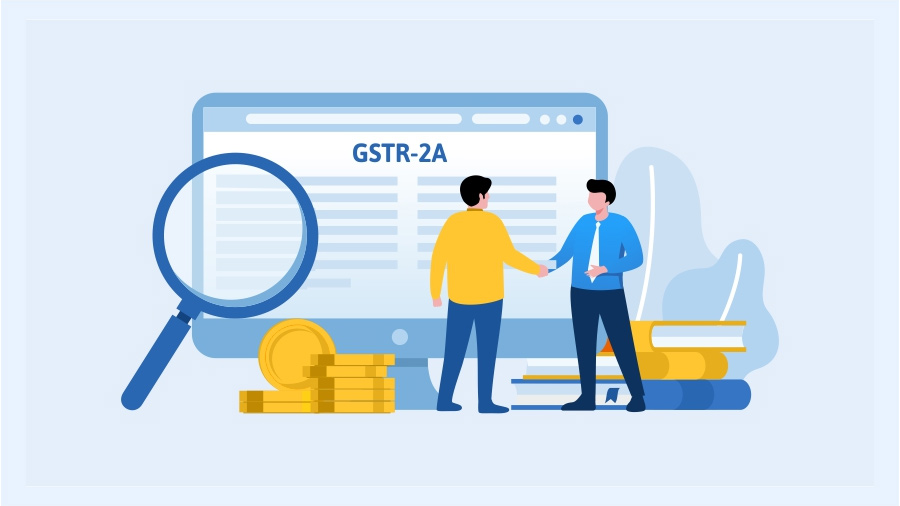
17 Nov Why is GSTR-2A Reconciliation Important for Businesses?
What is GSTR-2A?
The GSTR-2A form is a view-only auto-populated statement of inward supplies. It has a dynamic nature because it gets modified as the supplier uploads the invoices and so on. It is generated when the supplier has filed form GSTR-1/5, GSTR-6. The receiver can download GSTR-2A and see the details in his inward supplies.
Input Tax Credit or ITC depends on the details reported by vendors in the GSTR-1 form through invoices. The amount specified in that form is the extent to which ITC can be claimed by the taxpayer. Note that the taxpayer will get information about how much ITC can be claimed from the GSTR-2B, which is generated monthly and remains static.
What is GSTR-2A/2B reconciliation?
The reconciliation process involves matching or checking the data that has been uploaded by your suppliers with that of your purchase data in your books. As the supplier’s uploaded information is available to you in GSTR-2A/2B, you can use that statement and then compare it with your books to check for any discrepancies. This shows you if every transaction that has taken place between the two of you has been accurately recorded or if any invoices are missing. Any data that is missing can cause future troubles and make you liable to pay penalties in the form of interest and other fees as specified by the GST authority.
Importance of GSTR-2A/2B for businesses
On January 1, 2022, the Finance Ministry launched the 100% invoice matching criteria and made it mandatory for all businesses. Essentially, any business that wishes to claim the ITC will have to show 100% parity between their filed returns and supporting invoices. In simple words, you will only be able to claim ITC if the concerned invoice is present in GSTR-2A/GSTR2B. Here are a few reasons why GSTR-2A/2B reconciliation is important for businesses.
Loss of ITC
If the supplier has failed to upload an invoice, then it means the taxpayer cannot claim ITC because ITC will be allowed only on the reflecting on GSTR-2A/GSTR-2B statement. This will have a major impact on the working capital especially if this is done constantly by the supplier where he does not upload the invoices despite constant reminders for the same. It may not seem like a lot in the beginning but for MSMEs, this can make a huge difference because they need capital for running the business smoothly without hassles. ITC reconciliation ensures this loss of ITC does not occur and the taxpayer can claim the correct ITC on time.
Claiming excess credit/Incorrect values
The GSTR – 2A/2B reconciliation will prevent you from claiming ITC on the invoices that are reported in the GSTR-2A or GSTR-2B. For example, you may claim ITC on all the inward supplies in GSTR-3B return but, there are few that are not uploaded by the supplier. This results in an excess claim and may attract interest and penalties. There are situations where the invoices are uploaded, but the values are incorrect. Reconciling helps you identify such invoices and get those ratified with the supplier.
Notice from department
The GST authority will send notices to the taxpayer if there is a mismatch between GSTR-2A/GSTR-2B and GSTR-3B with ITC. Without GSTR – 2A reconciliation or 2B, the mismatch cannot be caught on time by the taxpayer thereby causing trouble in the future. With the help of reconciliation, the taxpayer will be claiming the correct ITC and thereby not attract such problems with the authorities. The notice asks the taxpayer about the reason behind the mismatch. If any documents are missing or the taxpayer cannot verify the same within the stipulated time, they will face penalties and may have to reverse along with interest.




No Comments